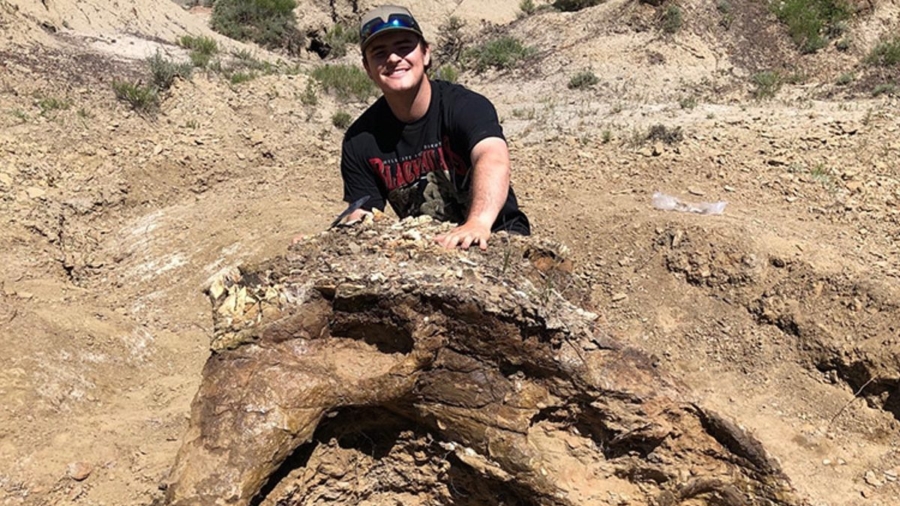A University of California student has discovered a 65 million-year-old dinosaur skull in a remote area of North Dakota.
Harrison Duran, a fifth-year biology student at the University of California, Merced, unearthed the partial Triceratops skull on a recent paleontology dig, according to a July 24 press release.
“I can’t quite express my excitement in that moment when we uncovered the skull,” Duran said. “I’ve been obsessed with dinosaurs since I was a kid, so it was a pretty big deal.”
Triceratops, which literally means the one with the three-horned face, was an herbivorous dinosaur found 68-66 million years ago in North America, according to Natural History Museum.
Duran works with Professor Justin Yeakel and one of Yeakel’s Ph.D. students, Taran Rallings, who has been advising Duran on his study.
Duran and another experienced excavator, Michael Kjelland, a biology professor at Mayville State University in North Dakota, were on a two-week digging expedition at Hell Creek Formation, a world-famous dinosaur fossil site, when Duran made the discovery.
According to Fossil Museum, Hell Creek Formation is one of the most intensely studied dinosaur fossil sites and includes parts of the Eastern Montana badlands, Northwestern South Dakota, and Southwestern North Dakota.
Kjelland had already uncovered a triceratops skull at the site last year, and the duo were now back to see what else they could uncover.
In addition to Duran’s find, they also uncovered some Cretaceous period plant fossils.
“It is wonderful that we found fossilized wood and tree leaves right around, and even under, the skull,” Duran said. “It gives us a more complete picture of the environment at the time.”
The two excavators named their Triceratops skull Alice after the landowner.
Duran and Kjelland had met at a biotechnology conference and after realizing their mutual passion for dinosaurs, together they launched a non-profit called Fossil Excavators. According to its website, the group is “devoted to cross-disciplinary research collaborations and opportunities with a focus on Paleontology, Paleoecology, Paleobiology, Paleobotany, Paleopalynology, Molecular Paleontology, and even Archaeology.”

Taking Alice to Undisclosed Location, Now Secure
Following the find, Duran and Kjelland have since stabilized the very fragile skull with a specialized glue, coated it with foil and plaster, and transported it by truck to an undisclosed location before it was secured back in Kjelland’s lab at Mayville State University.
“There have been people in the past who have stolen dinosaur bones,” Kjelland said in the release, explaining further that Dinosaur bones are extremely valuable.
“Over the course of a week of diligent excavation, Alice was meticulously stabilized with glue, plastered up and removed from a location she called home for over 65 million years,” the duo explained on the Fossil Excavators website.
The duo is yet to decide if the fossil will have a permanent home but they are sure they want to use it for educational purposes.
“My vision is to have Alice rotate locations,” Kjelland said. “The goal is to use this find as an educational opportunity, not just reserve Alice in a private collection somewhere so only a handful of people can see her.”
The excavators have plans to prepare a cast of Alice’s skull, which Duran wants to display at the University of California, Merced.

“In the coming months, Fossil Excavators will begin the process of preparing the skull for display and research,” the duo said on their website.
Duran would also like to bring the actual fossil to the university one day, according to the press release.
“It would be amazing for UC Merced to be able to display Alice on campus,” Duran said.
“It’s such a rare opportunity to showcase something like this, and I’d like to share it with the campus community.”
From The Epoch Times


